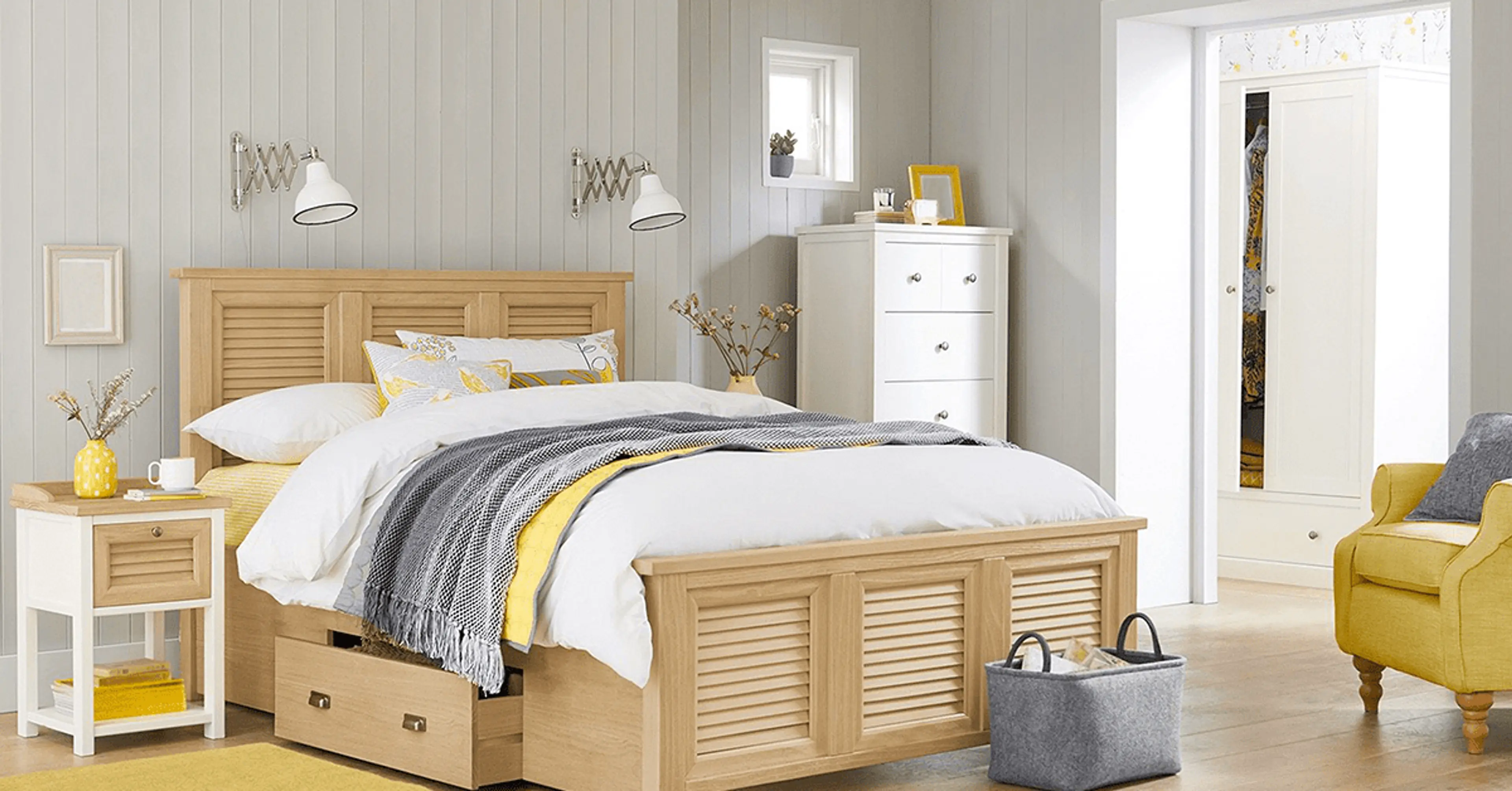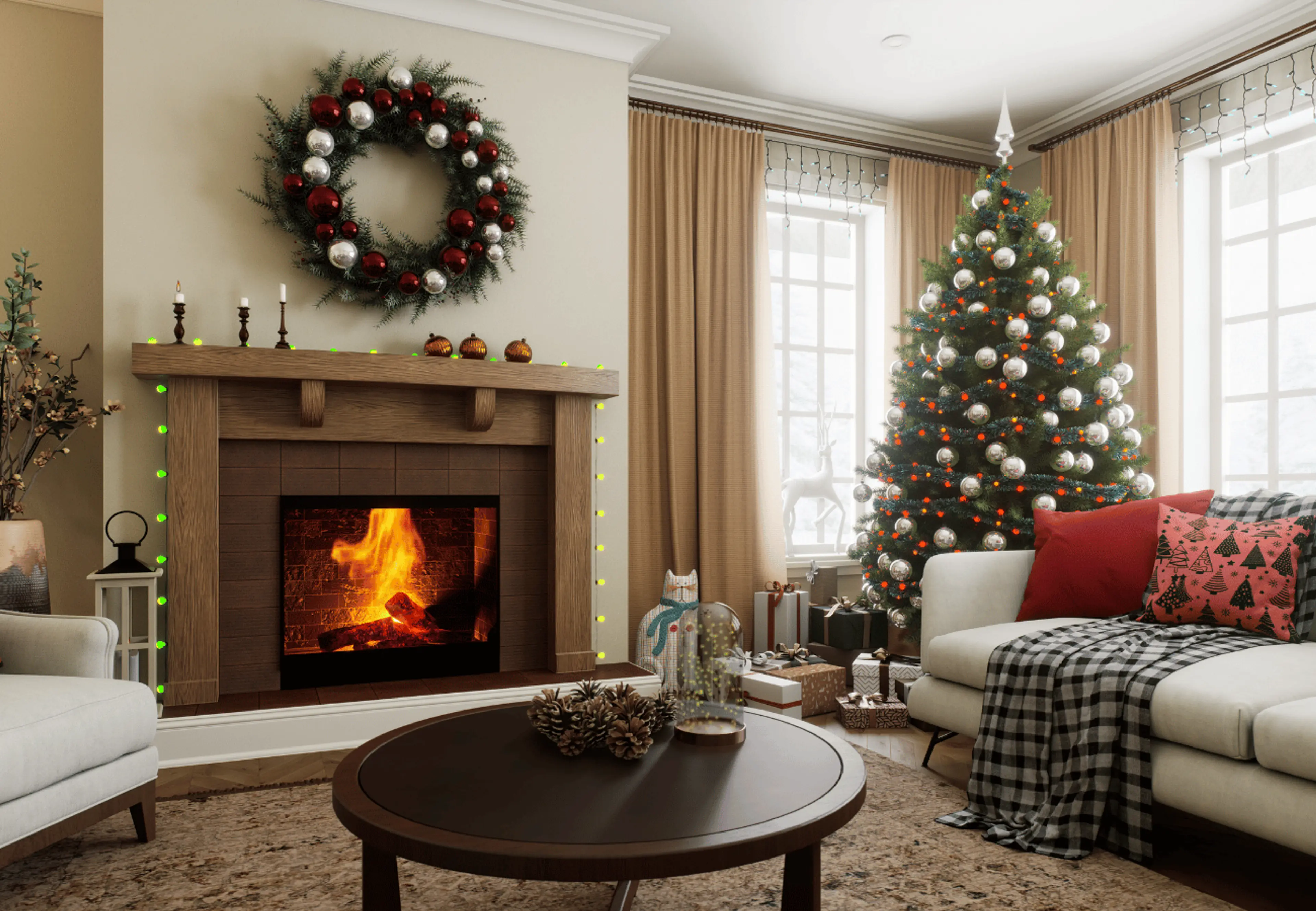Mixing Wood Tones That Complement Your Wooden Wall Design And Floors

 Dec , 2022
Dec , 2022- Berger Speaks
- 4 Min Read
Tips to blend wood tones throughout your home!
Whether you are completely refurbishing or adding new décor pieces in your living space, you will likely end up working with wood. While there was a time when combining different wood tones was considered a faux-pas, times have changed today. There are no hard and fast rules when it comes to woodwork.
We have some good news for you when it comes to home renovation tips. Matchy-matchy wooden decorative items are a thing of the past! You can now experiment with different wood tones in a single room.
You don’t have to think twice while placing your dark cherry-toned heirloom grandfather clock in close proximity to your treasured blonde-toned wooden bookshelf or any other wall wood decor in lighter tones.
Our in-house décor experts believe that using the same wood tone in a living area can make everything look dull and flat. Instead, you should go for a layered look with wood tones that not only complement but also contrast well. Truth be told, mixing wood tones can be just as beautiful as mixing different metal décor pieces in a room.
You can refer to our guide that has been put together to help you work with multiple wood tones in wooden home decor without making it go off balance. Let’s get started!
Consider Your Layout
It is all about placement when it comes to mixing wood tones. Avoid placing wood pieces that are similar in colour close to one another in the same room. For instance, light tones huddled together at one corner of your room can upset the visual balance. Create a fine balance by placing various wood tones throughout the room. This will also ensure that one side of the room doesn’t appear lopsided and ‘heavier’ than the other.
Select The Dominant Wood Tone
It is a good idea to pick a dominant wood tone as a starting point to help you choose other pieces to bring into the room. If you have wooden floors, your work here is done – those are your dominant wood tone. When choosing your other wood tones to add to the space, always check your dominant shade first.
Find The Undertones
With your dominant wood tone picked, take a peek deeper at it to identify what undertones or supporting tones you want to put into your design.
Warm Undertones In Wood
Let’s say your dominant wood tone has either yellows, oranges or reds when you look at it. In that case, you want to design around woods with warm undertones.
Cool Undertones In Wood
Let’s say your dominant wood tone has cool undertones such as grey, black, blue or even a bit of green. Picking woods that have these undertones will make the room feel cohesive.
Go High-Contrast
This is the most fun and daring method. Rather than layering wood pieces with an extremely similar finish which sounds like a “safe” approach, take the bold route and do something the polar opposite.
Embrace High-Contrast Wood Tones
Mixing a light wood like ash with a dark wood such as ebony will always look chic and intentional. This is a signature designer move and is sure to spruce up your aesthetic instantly!
While there are several water-based and solvent-based wood coatings in the market today, when it comes to playing with multiple wood tones, Berger Imperia Breathe Easy can prove extremely effective and also a healthier alternative.
Formulated with world-leading German water-based technology, it is a zero-smell, one-component water-based polyurethane which offers an easy-to-apply coating for both new and precoated heritage furniture in clear, opaque and transparent shade options.
That’s not all. It has anti-microbial properties that kill 99.9% germs and prevent algal as well as fungal growth.
Complementing Wall Colours And Wood Tones
If you are looking for the best small bedroom wall colour ideas or any other room of your home, look no further. We have you covered. Consider these wood and wall colours that beautifully suit each other:
Golden or yellow woods like maple wood, oak and yellow pine look fabulous against earthy-toned wall colours like light brown, beige or light green.
Light and dark tones of natural wood like timber and walnut wood are best teamed with a beige wall backdrop.
Cedar and cherry teak look classy with olive green walls. Mountain pine and white pine look stunning against a grey wall. Greige, a mixture of grey and beige works best with darker-toned woods.
Additionally, if you have dark-toned decorative wood panels for walls, it would be a good idea to place lighter-toned wooden décor pieces near them and vice versa. This would help break the monotony and enhance the wooden wall design.
Conclusion
We hope you have found the information provided in this blog useful. We love the idea of mixing woods because we believe wood is too beautiful to just pick one colour.
Contact us to avail Berger Express Painting service if you would like to get started on your home improvement project. We would love to help you! Our painting professionals will elevate all the wooden surfaces of your home, helping create a cohesive and well-designed look. SMS ‘XP’ to 56767 or give us a call on our toll-free number – 1800 103 6030.
If you found reading this blog useful, we recommend you read our blog, “Make Your Wooden Furniture Timeless!”
check for any query you have about the blog
Frequently Asked Questions
The largest piece of wood furniture is most likely where you will find your dominant wood tone. If you don’t have wooden floors, pick the largest furniture piece in the room such as a dining table, a desk or a dresser.
Fret not! You can smoothen out the dissimilarity by introducing an accent rug or a gorgeous carpet. It will take the look from mismatched to well-styled!
This is easy to figure out! Warm undertones include hints of yellow, red, pink and orange while cool undertones are black, green, blue and grey.



